Few cities offer a more immersive experience into the past than the walled city of Dubrovnik on the southern coast of Croatia. With its thick medieval walls, massive gates and soaring battlements, Dubrovnik transports visitors back to a time when the fortified city was a major maritime power commanding the third-largest navy in the Mediterranean.
The beautifully preserved city has long been the country’s star tourist destination, and it’s garnering even more attention today as a filming location for the popular HBO series “Game of Thrones.” Fans of history and fantasy alike will delight in all the sights and attractions in Dubrovnik, and the nearby beaches and islands offer ample opportunities for fun in the sun too. Even a short visit and exploring just a few of the things to do in Dubrovnik makes it easy to understand why the city is nicknamed the Pearl of the Adriatic.
25. Sponza Palace
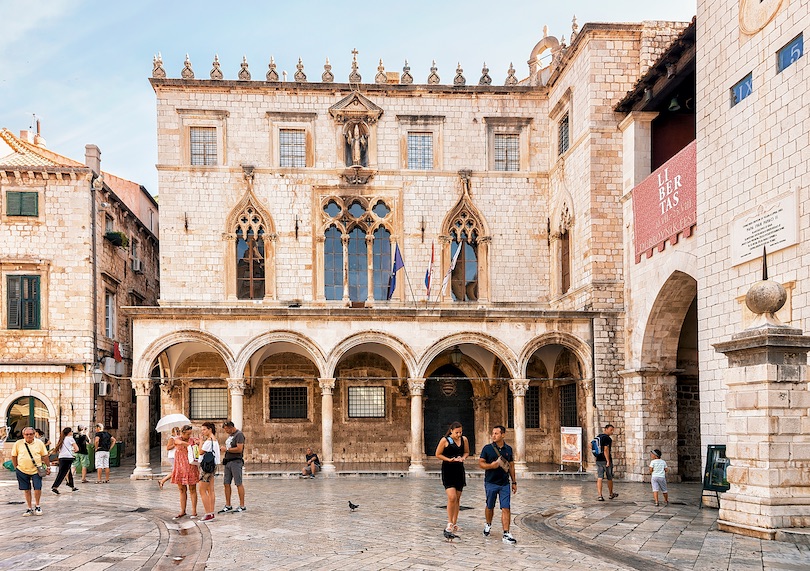
The Sponza Palace held many public functions and has been the keeper of important documents and valuables since the Republic of Dubrovnik. At present, it houses the Dubrovnik Archive, which holds one of the richest archive collections in the world which unfortunately cannot be visited. Yet you can visit the poignant Memorial Room of the Dubrovnik Defenders which commemorates the death of soldiers defending the city in the early 1990s.
The 16th-century rectangular edifice with an inner courtyard was built in an exquisite Gothic-Renaissance style. It stands untouched by the 1667 earthquake. With its excellent acoustics and elegant architecture, the courtyard frequently hosts concerts, performances, and art exhibitions.
24. Fort of St. John
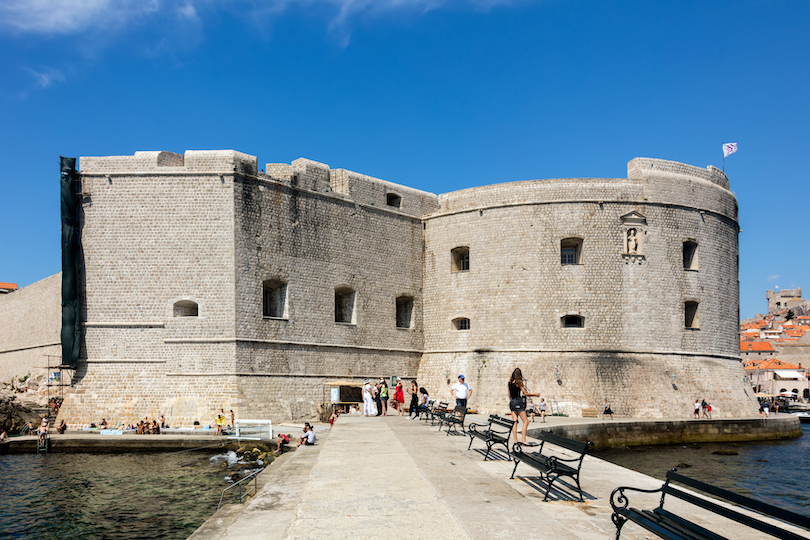
With a circular-shaped wall and an impressive medieval defense mechanism, the Fort of St. John guards the entrance to Dubrovnik’s Old Harbour. It is an integral part of Dubrovnik’s renowned city walls. You can rest here, and take in a fantastic panorama of the Adriatic Sea and Lokrum Island.
Its current guise dates from the 16th century, however, the first fort was built in the 1300s. The Fort was designed to prevent enemy ships from accessing the city. Though its military days are past, it still stands as an impressive monument to the city’s turbulent history. Today the large interior houses the Maritime Museum and an aquarium.
23. Copacabana Beach
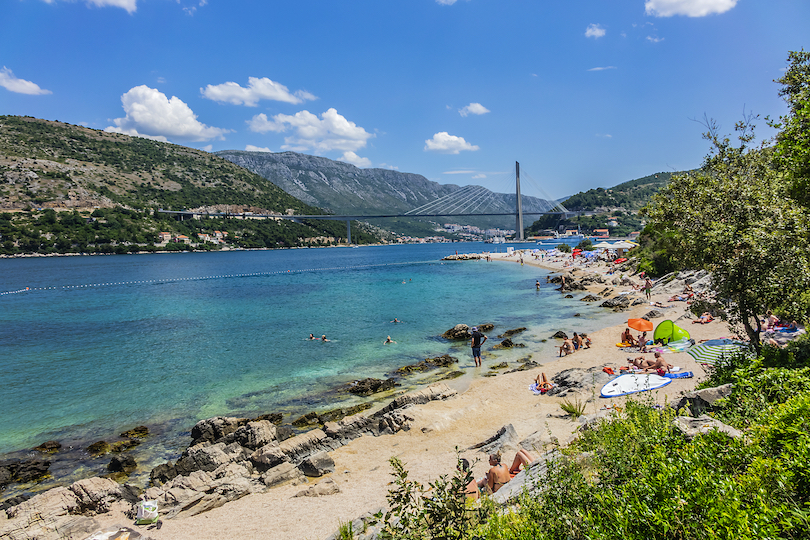
On the northern coast of Babin Kuk settlement is Copacabana Beach. The pebbly beach is stocked with facilities: showers, loungers, an inflatable floating playground, kayaks, and jet skis to hire. There is also a vine-covered restaurant to enjoy light salads, risottos, and seafood dishes, as well as a range of cocktails and local wines to sip on as you relax.
The beach does transform into a party venue, an alfresco nightclub, hosting foam parties until the morning. It offers views of the islands of Daksa and Elafiti, and the semi-suspended bridge which is a unique site. Set around a crescent-moon-shaped bay on the Lapad Peninsula, it is a wonderful place to unwind beside the Adriatic Sea. Get the bus to hotel Valmar President and follow the path to the seafront.
22. Minceta Fortress
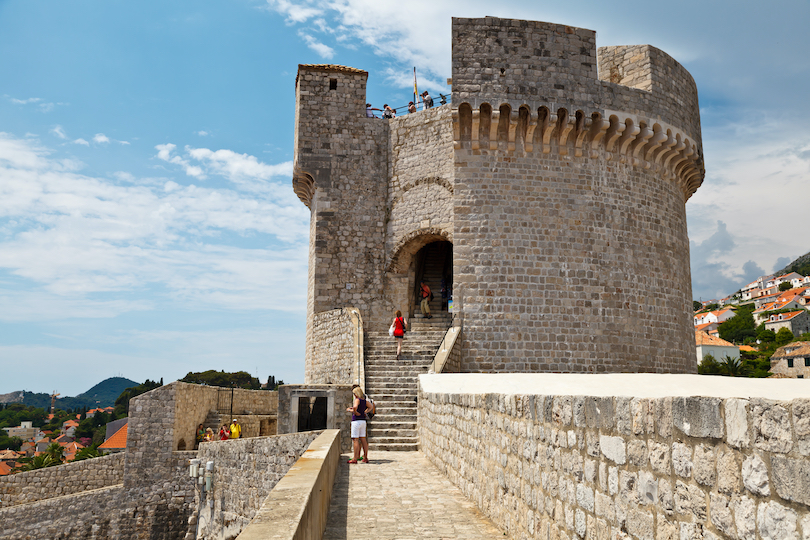
A round tower situated at the highest point of the city walls, it was originally built in 1319 in a square shape to protect the edge of the city from attack. It was expanded to its current form in 1464 by architect Juraj Dalmatinac, adding stability to the lower part of the structure and completing the iconic Gothic crown. It continues to instill a sense of power, not of strategic importance but decoration.
In Game of Thrones, its exterior appeared as the House of the Undying in Qarth. The terrace boasts breathtaking panoramas of the old town, Lokrum island and blue waters of the Adriatic Sea. The lower floor of the fort houses the entrance to an archaeological museum. You can visit the Fortress as part of the city walls trail.
21. Šipan Island
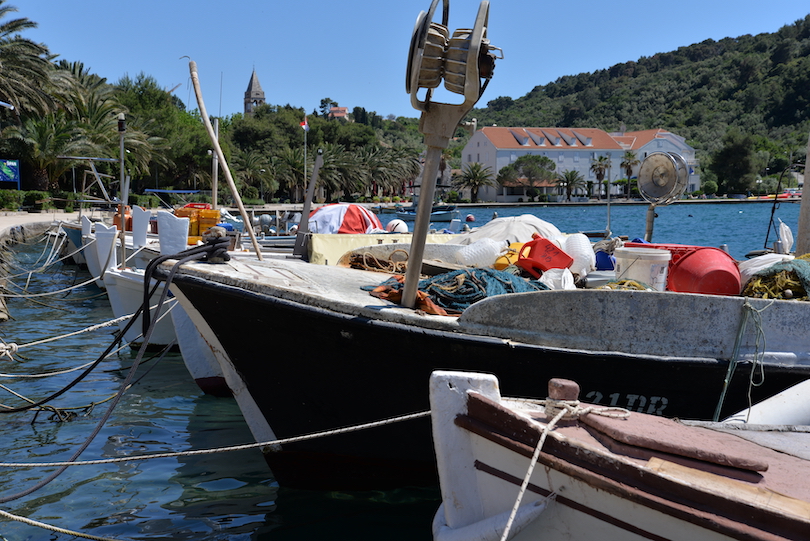
The largest of the Elafiti archipelago group, Šipan Island is situated just off the coast of Dubrovnik. It was a favourite destination of the Dubrovnik aristocracy who fled on holiday here in the 15th century. Most ferries dock in Sudurad, taking roughly one hour to travel across the sea. Lining the harbor is a large fortified villa and tower built in the 16th century (which is not open to the public).
On the other side of the island, the village of Sipanska Luka has the remains of a Roman villa and a 15th-century Gothic palace. Here you can watch fishermen haul in the day’s catch and take a stroll among the grand buildings. It is a mythical place with fragrant winds, clean seas, and colourful sunsets.
20. Sveti Jakov Beach
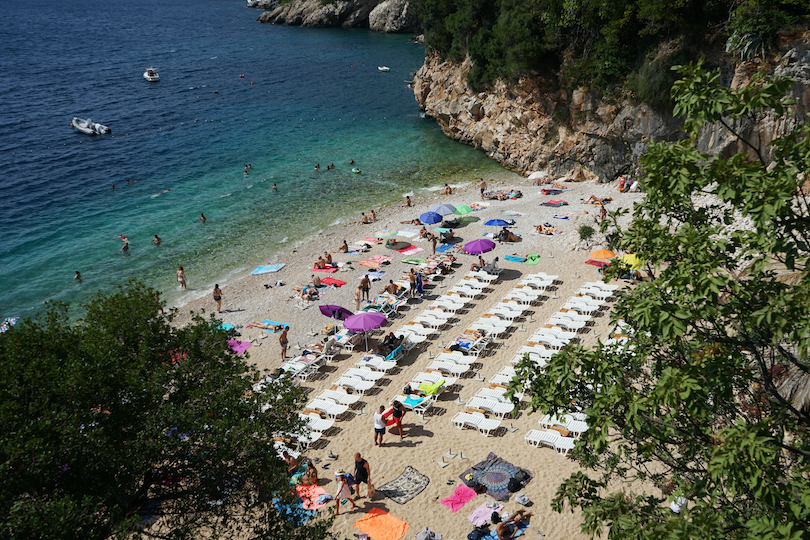
A gorgeous beach, located in the eastern part of Dubrovnik town offers a distant look to the Lokrum and the Old Town. Once you arrive near Sv. Jakov church, which the beach is named after, there is a step descent down to the pebbly waterfront. To save a trip down steep steps, you can opt for a taxi boat which leaves from the Old Port of the city. It is a true Dalmatian pearl in a hidden bay.
It is slightly cooler here than other beaches in Dubrovnik as the water is relatively deep near the coast. It is a paradise for avid divers and those who enjoy snorkeling. By the translucent aquamarine waters are a restaurant and café bar.
19. Dominican Monastery
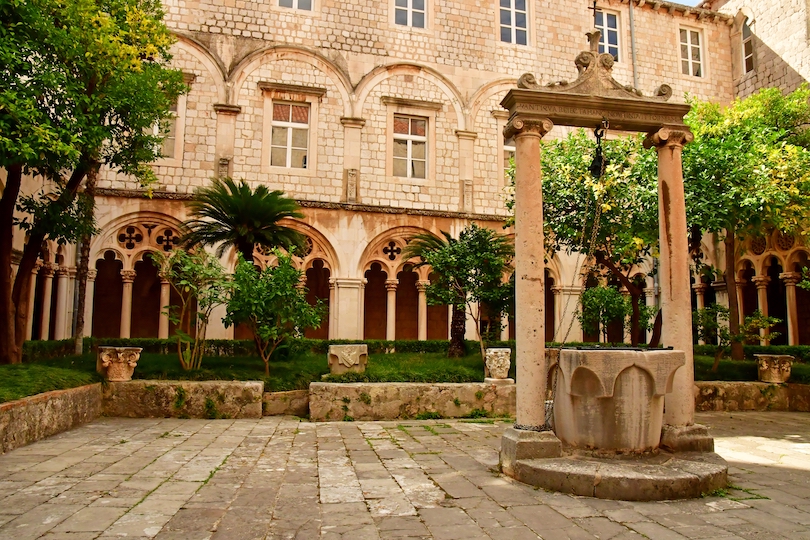
The imposing Dominican Monastery is an architectural highlight. Designed in Gothic-Renaissance style, it contains an impressive art collection. It was also constructed around the same time as the city walls in the 14th century. The interior has a graceful 15th-century cloister constructed by local artisans after the designs of the Florentine architect Maso di Bartolomeo, a true ode to the renaissance era.
The church has a single-nave interior, lit by two sparkling stained glass windows. Located behind the Sponza Palace and Ploče Gate, the striking exterior resembles a fortress rather than a religious complex.
18. Dubrovnik Cathedral
The Cathedral of Assumption was built on the site of a 7th-century basilica, enlarged in the 12th century. It was supposedly funded by a gift from England’s Richard I, who was saved from a shipwreck on the nearby island of Lokrum. After the first cathedral structure was destroyed in the 1667 earthquake, reparations began with a baroque replacement, completed in 1713.
The Assumption of the Virgin painting by Titian is most striking, hanging behind the main altar. The Cathedral’s ornate treasury, once the richest in the Adriatic, is found to the left of the main altar. Covered in gold and silver, it contains relics of St. Blaise and other 150 works made in the unassuming Dubrovnik goldsmith’s workshops between the 11th and 17th centuries. It definitely stands out among the almost 30 churches and chapels in the Old Town.
17. Lapad Beach
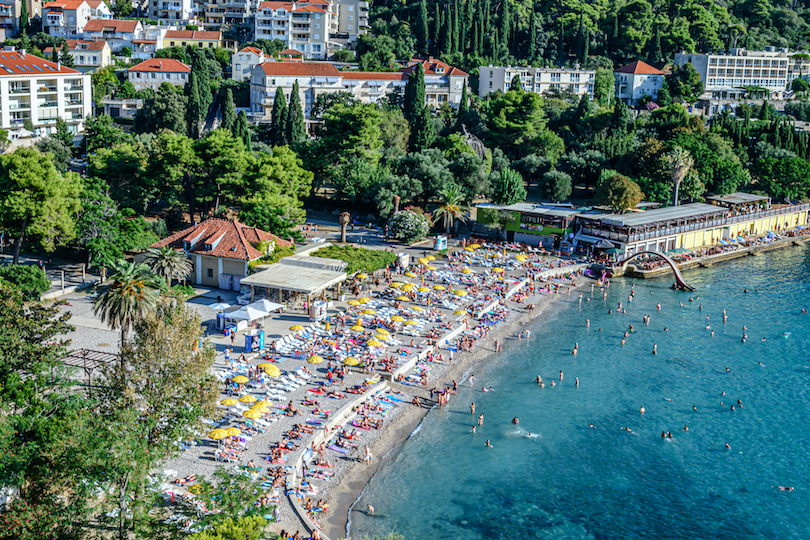
Cocooned by the forested Petka hills on one side and the town of Babin Kuk on the other, Lapad Beach is a busy string of pebbles and seaside hotels. Lined with cafeterias and bars, as well as kids’ playgrounds, one can’t help but find something to do and be entertained. Crowned as the sunset beach, it is particularly loved for its spectacular views over the Grebeni rocks and Koločep Island.
Located on the Lapad peninsula which is lined with a pedestrianized promenade. It is the main beach on the bay, surrounded by pretty walkways and smaller coves along the harbor. Having all the amenities one needs, it is a prime location for a beach day in Dubrovnik.
16. Church of St. Ignatius
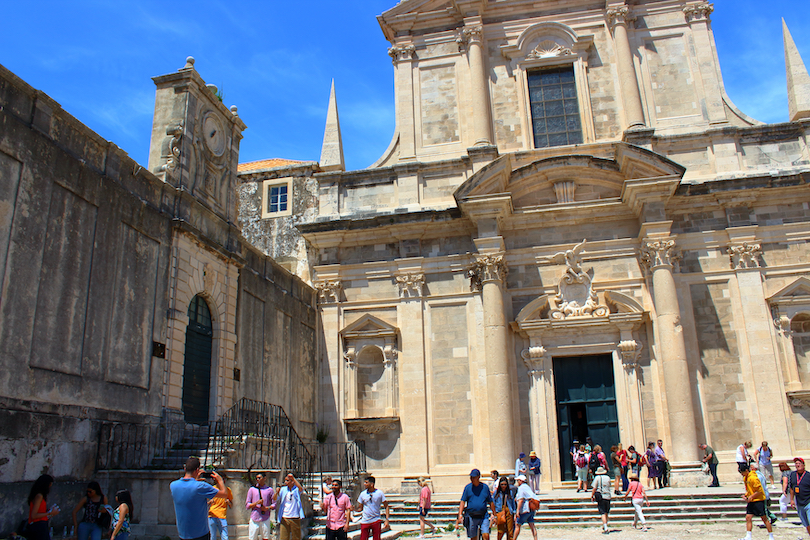
Dramatically set atop a broad flight of Baroque stairs on the south side of Gundulic Square, the Jesuit church was built between 1699 and 1725. The Jesuit Staircase, now nicknamed as ‘GOT Steps’, is where the infamous scene of Game of Thrones Cersei’s shame walk was filmed.
The church’s wonderfully ornate interior is decorated with magnificent frescos displaying the scenes of St. Ignatius’ life. He was the founder of the Society of Jesus. On this fine complex also stands the Collegium Ragusinum and the reputable Jesuit college. The church is a single nave, wide chapels and a semi-circular divided apse. Interestingly, the church belfry houses the oldest bell in Dubrovnik, set up in 1335. Mass in English is held on Sundays.
15. Lopud Island
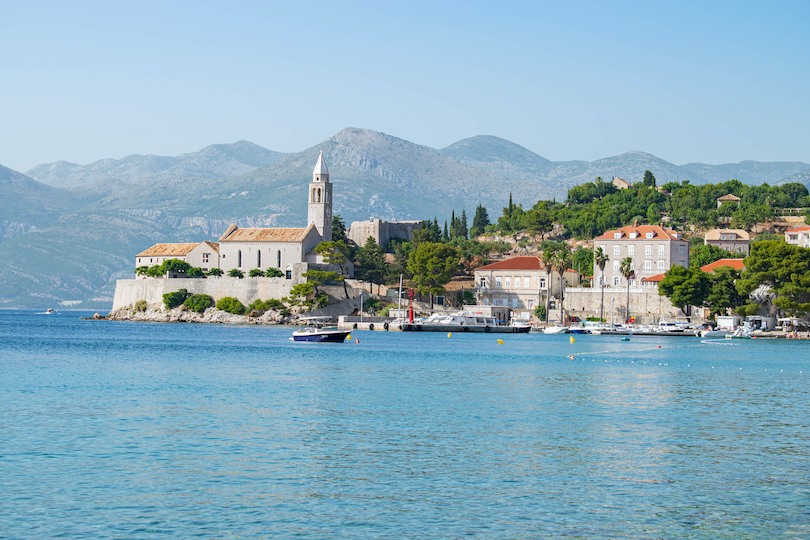
The car-free island of Lopud is composed of stone houses, surrounded by rich gardens. There’s a little beach in town, but it is recommended to walk across the backbone of the island to sandy Šunj where an understated bar serves delicious grilled fish. The walk takes 25 minutes, or if you want to ride in style, hop in the back of a golf cart.
As soon as you set eyes on the island’s harbor, the striking sea wall and the colossal bell tower of Lopud’s 15th-century Franciscan Monastery dominate the skyline. The monastery is off limits to the public, but there are many old churches to visit here, including St. Mary-of-the-Cave Church, built in 1483. Regularly open to the public, it is worth a visit to the fascinating altarpiece and intricately carved choir chamber.
14. Museum of Croatian War of Independence
At this museum, you can learn about what took place in the city some 25 years ago and the people of Dubrovnik’s struggle for liberation. The first phase of the project features 500 exhibits. See examples of the ammunition that damaged the city, maps of destroyed areas, and a visceral video recording of the event.
Get a close-up look at documents, art and documentary photographs, war logbooks, and objects from the everyday lives of residents and defenders of the city. At the top of the hill terrace, climbing two flights of stairs, you can take in the view of the city today, no longer within the constraints of war. It is an eye-opening and hard-hitting experience, and well worth a visit.
13. War Photo Limited
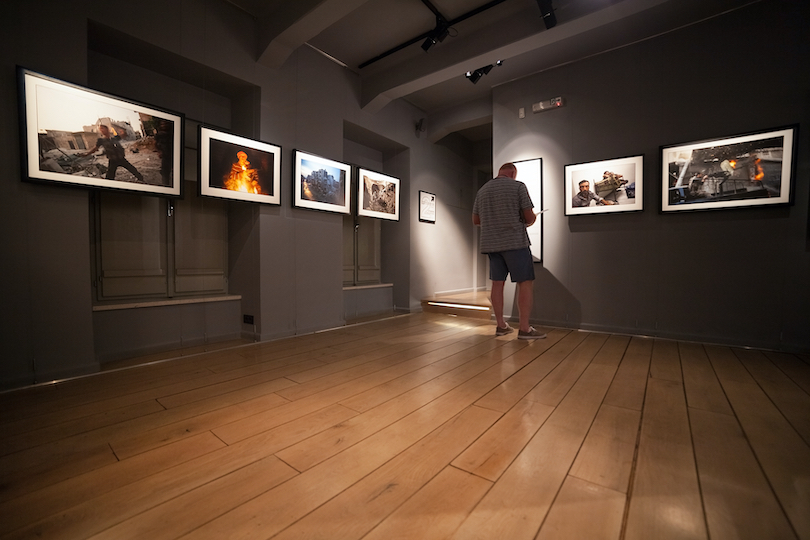
As immensely powerful as the Museum of Croatian War of Independence, War Photo Limited is a gallery of photojournalism from global war zones, featuring compelling exhibitions. The exposition intends to educate the public in the field of war photography and to shed light on the everyday unjust and atrocious realities of war.
The exhibition center is spread over 2 floors. On the first floor, the exhibitions change, covering a range of conflicts. There is a permanent exhibition on the upper floor devoted to the wars in Yugoslavia. The curated photographs are a collection of color and black-and-white images of the Balkan conflicts.
12. Lokrum Island
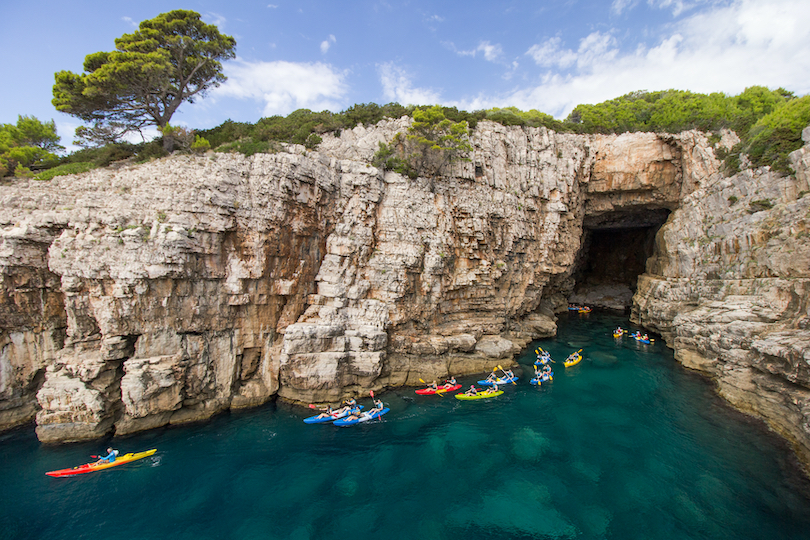
A 10-minute ferry ride from Old Harbour is Lokrum Island, a beautiful, forested island of pines, olive trees, holm oaks, and black ash. Boats leave hourly in the summer months and the public boat ticket price includes the entrance fee. A popular place for a dip in the Adriatic sea is the small, incredible saltwater lake known as the Dead Sea.
The medieval Benedictine monastery is the island’s main hub. It houses a restaurant and a display on the island’s history and Game of Thrones, which was partly filmed here. You can pose powerfully on a reproduction of the Iron Throne! For a view of the lush island, head to Fort Royal’s rooftop.
11. Game of Thrones Walking Tour
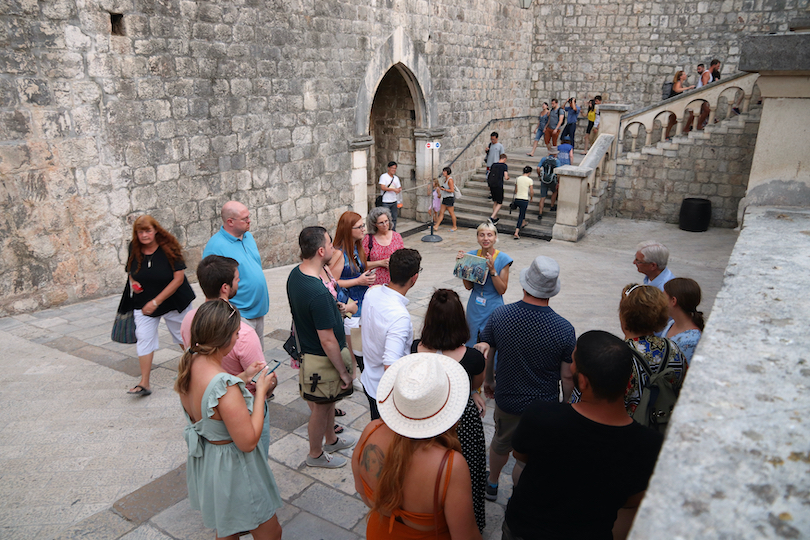
The epicentre of the series, King’s Landing, is set in Dubrovnik. It is the setting for beheadings, murders, and schemes. The easiest way to delve into the world is on a tour. There are plenty online but you can do a self-guided tour too and walk into an entirely fictional realm.
Head to Fort Lovrijenac, known as the Red Keep for an incredible King’s Landing photo spot. The main entrance to Dubrovnik’s Old Town, Pile Gate, pops up as the scene of the riot in King’s Landing. The gate is recognizable, and you can even notice the statue of St. Blaise, Dubrovnik’s patron saint overlooking the madness. Follow St. Dominic Street, and take the same contemplative steps as Tyrion and Bronn. The cold, limestone streets from the TV Series are bewitching.
10. Old Harbour
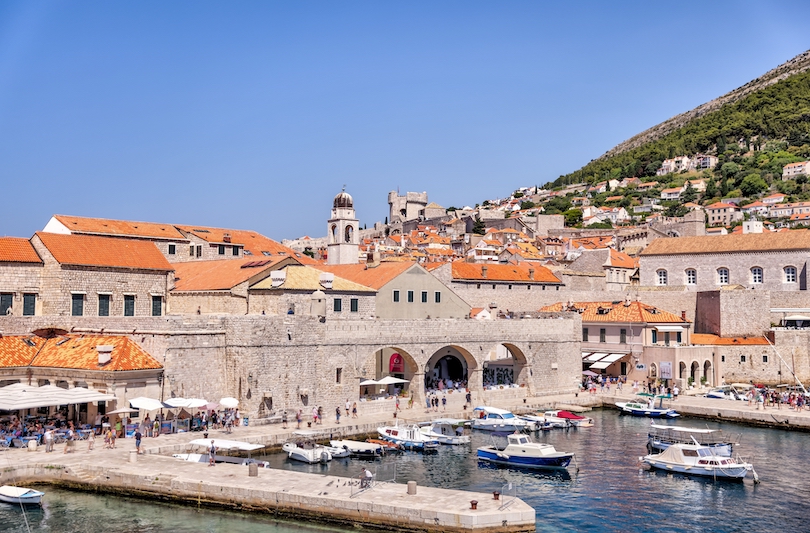
Located in the eastern section of Dubrovnik, the Old Port is protected by two breakwaters: the Porporela, built in 1873, and the much older Kaše, which was built in 1485 from massive stones piled on wooden foundations.
In Dubrovnik’s seafaring heyday, forts were constructed around the perimeter of the harbor to guard the city’s ships. Today, the Old Port is both a tourist attraction and a departure point for cruises to the beaches on nearby Lokrum Island.
With its scenic views and built-in benches, the breakwater Porporela is a popular place to take an evening stroll and watch the sun disappear over the Adriatic Sea.
9. Banje Beach
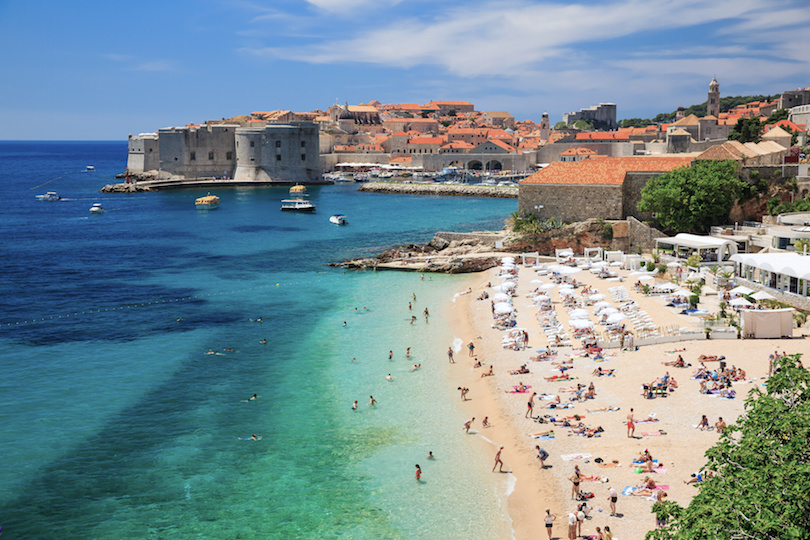
Broad Banje Beach is the closest beach to the Old Town, which makes it the most convenient beach and the beach with the best views of Dubrovnik’s walls. The island of Lokrum can also bee seen. As the beach faces south, it catches the sun all day. The beach is a mix of gravel, pebbles, and rocks in the public section, and sand in the private portion run by Banje Beach Club.
It’s a great way to beat the heat after some sightseeing in the Old Town. Activities here include beach volleyball, mini football or water polo. You can also enjoy lying on deck chair and having a drink.
8. Franciscan Monastery
Located near the Pile Gate at Stradun’s west end, the Franciscan monastery is home to the oldest still-operating pharmacy in Europe. While most of the church’s original construction was destroyed during the 1667 earthquake, the Romanesque cloister and gardens that greet visitors are much the same as they were 500 years ago.
An ornately carved portal crafted in 1498 is on display as well. Treasures from the monastery’s collection of rare books and art objects are exhibited in a large Renaissance hall. Herbal lotions and potions made from centuries-old recipes are available for purchase from the 14th-century pharmacy.
7. Onofrio Fountain
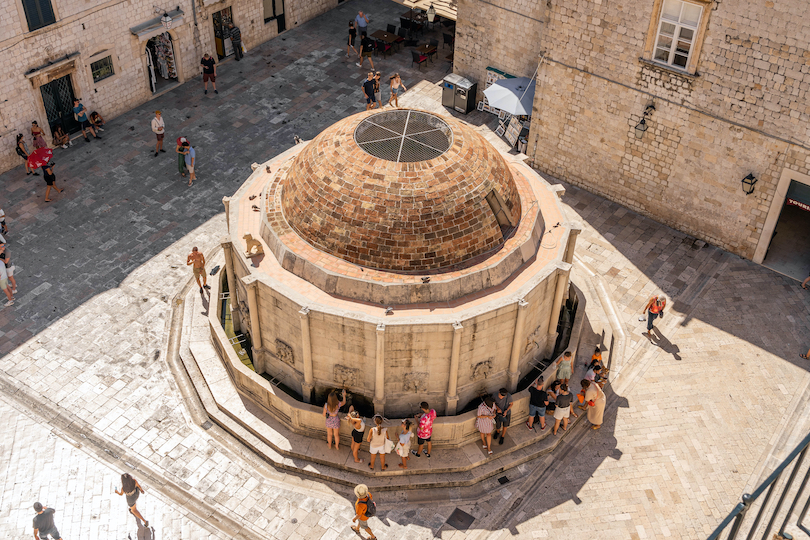
During the 15th century, Dubrovnik took steps to ensure that the city had a supply of fresh water by building an aqueduct system connected to a spring in nearby Šumet. Master builder Onofrio Giordano della Cava was entrusted with the task.
Two fountains bearing the architect’s name mark the end points of the aqueduct system. The more impressive of the two is the 16-sided Big Onofrio Fountain, which stands on the Stradun in front of St. Savior church. Topped by a large cupola made by Milanese artist Peta Martinov, the fountain still provides cold and clear water to thirsty visitors.
6. Pile Gate
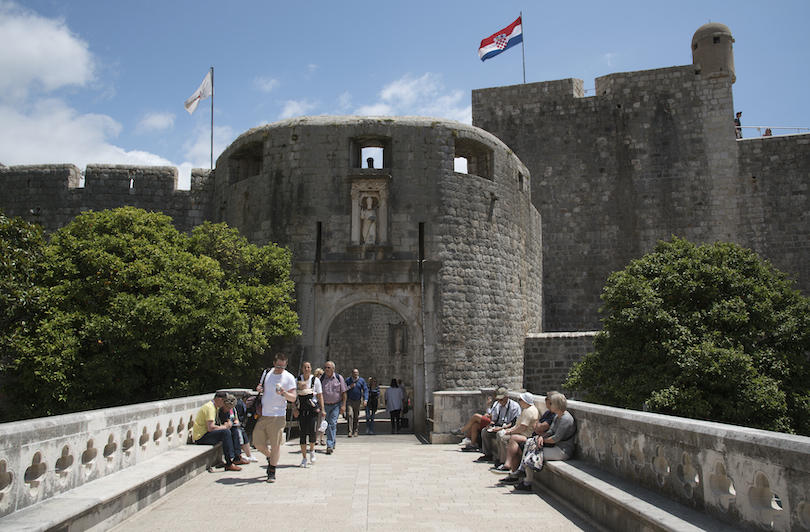
The busiest entrance to Dubrovnik’s walled Old Town is Pile Gate, which is actually two gates in one. Built in 1537, the outer gate features an arch built into a semi-circular fortification.
Ornamented by a statue of St. Blaise, the city’s patron saint, the 15th-century inner gate leads visitors to the Stradun. The drawbridge before the double gate is no longer pulled up at night with winches and counterweights. Nowadays, the gates stand open 24/7. Locals dressed in period costume sometimes pose as guards for photo opportunities.
5. Fort Lovrijenac
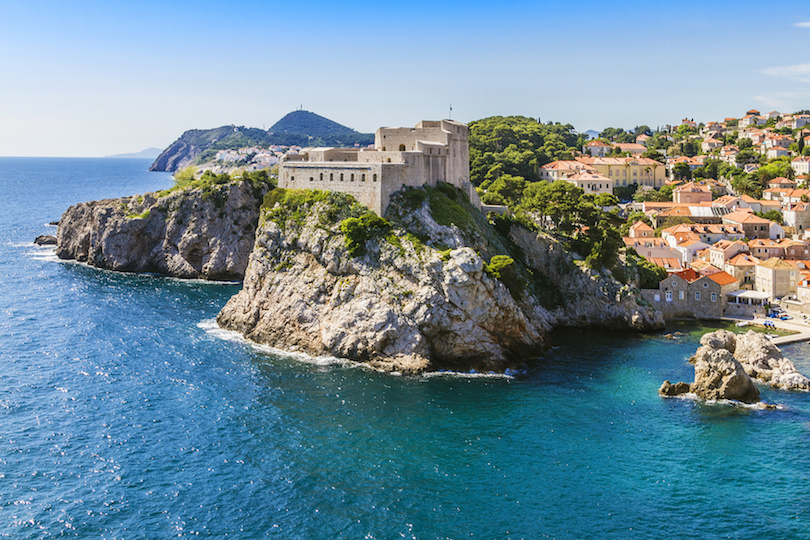
Situated on a towering rock overlooking the Adriatic Sea, Lovrijenac was constructed as a detached fortress to repel attackers from both land and sea. The original structure dates back to at least 1301. Its triangle shape and staggered terraces were built to accommodate the shape of the rock.
The fortress was so impenetrable that it could be held by a 25-man garrison. Today, Lovrijenac is a popular attraction in Dubrovnik and plays host to a variety of cultural events, from the world series of cliff diving to local productions of Shakespeare’s Hamlet. It also served as a backdrop in some of the most memorable scenes from the “Game of Thrones” series.
4. Rector’s Palace
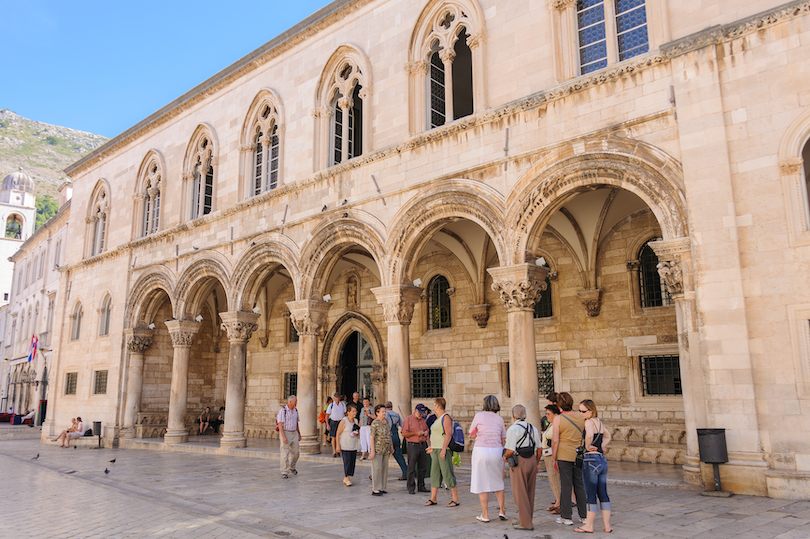
In addition to serving as the home to the Rector of the Republic during his term of office, the Rector’s Palace was also a meeting place for the city’s governing bodies, an armory, a prison and the local lock-up.
Like other structures in Dubrovnik, the original medieval palace has been rebuilt several times over the centuries. The palace is notable in that it manages to blend Gothic, Renaissance and Baroque elements into a unified whole.
Now home to the Cultural History Museum, the Rector’s Palace has been decorated with period furnishings to recreate the styles of the original rooms.
3. Dubrovnik Cable Car
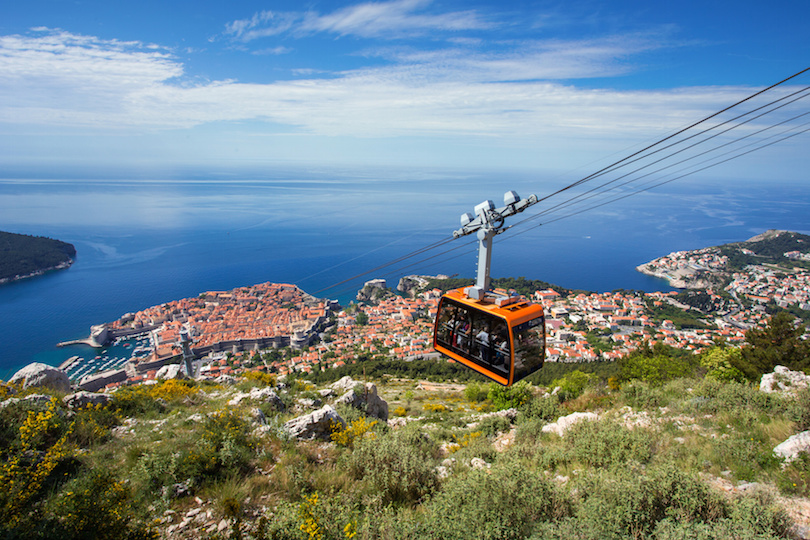
The best way to enjoy a panoramic view of Dubrovnik’s ancient city is by gliding to the top of Mount Srdj on an ultramodern cable car. Located just outside the city walls, the cable car station offers visitors a quick, easy and scenic mode of transport to the peak of the rugged little mountain.
In addition to a restaurant, snack bar and souvenir shop at the summit, there’s a small museum and memorial commemorating the Homeland War of the 1990s as well. Hikers may enjoy descending the mountain by way of a steep ropeway trail.
2. Stradun
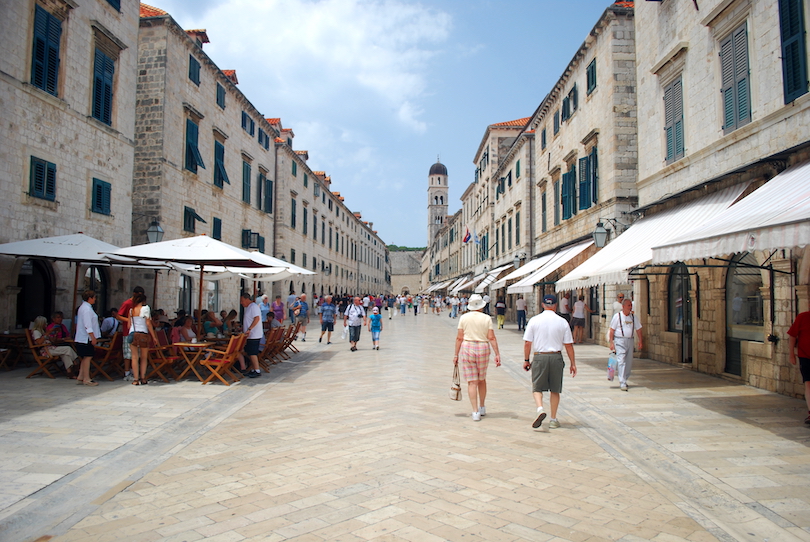
Much of Dubrovnik was destroyed by an earthquake in 1667, but reconstruction gave the prosperous city the chance to rebuild with an organized scheme. The rows of baroque homes and shops that line Dubrovnik’s main thoroughfare are a lasting result of this careful planning.
Running through the center of the Old Town, Stradun is a beautiful street where visitors can shop for souvenirs, enjoy an ice cream at a sidewalk café or join the locals for the traditional evening stroll. Many of the city’s monuments are located on the Stradun too, including the landmark 15th-century bell tower at the end of the Stradun in Luža Square.
1. Dubrovnik’s City Walls
Walking along the top of the city’s medieval walls is a highlight of any stay in Dubrovnik. The walls encircle the entire Old Town quarter and take at least an hour to explore.
Most of the walls were constructed during the 13th century but have been reinforced over the years to withstand repeated attacks. A series of imposing towers intended to protect the city against the Turks, were added in the 15th century. Fans of the TV series “Game of Thrones” will recognize sections used as settings for the show’s capital city of King’s Landing.
Standing 25 meters (80 feet) high in some places and up to 6 meters (20 feet) thick in others, the walls are an awesome sight in their own right, but the views that they offer of the town, the harbor and of the Adriatic Sea are simply spectacular.

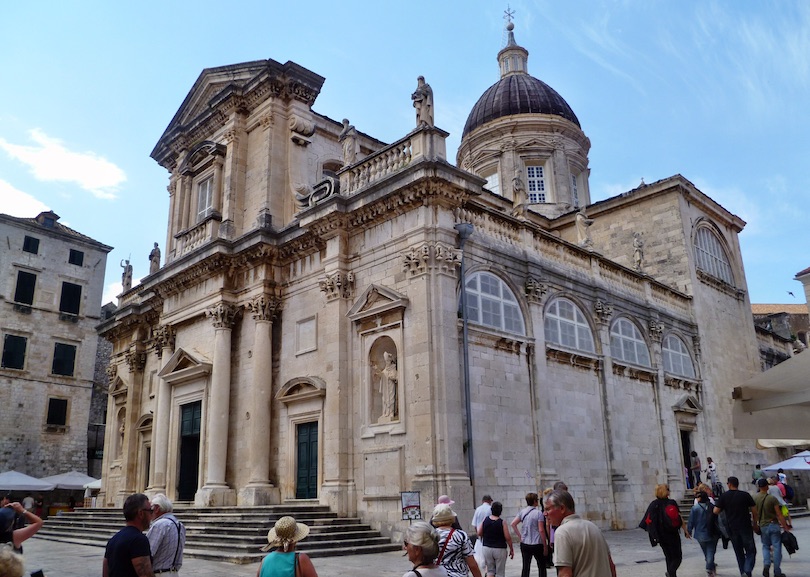
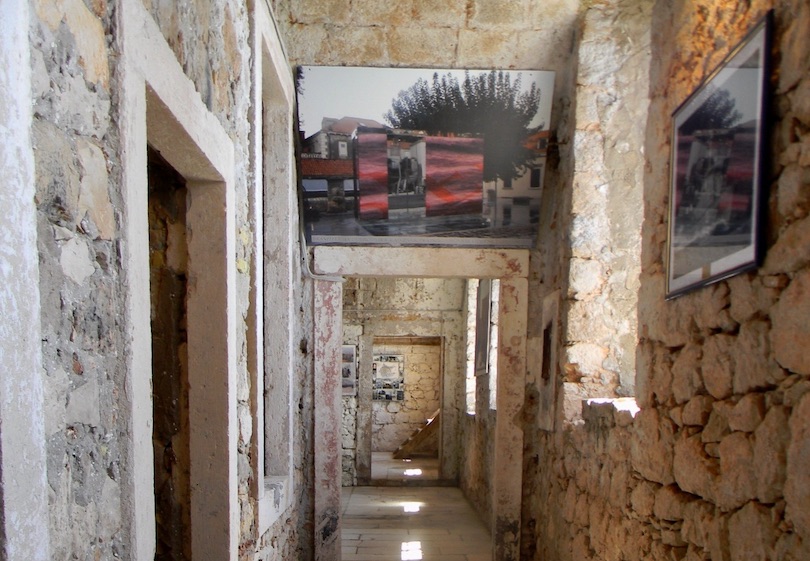
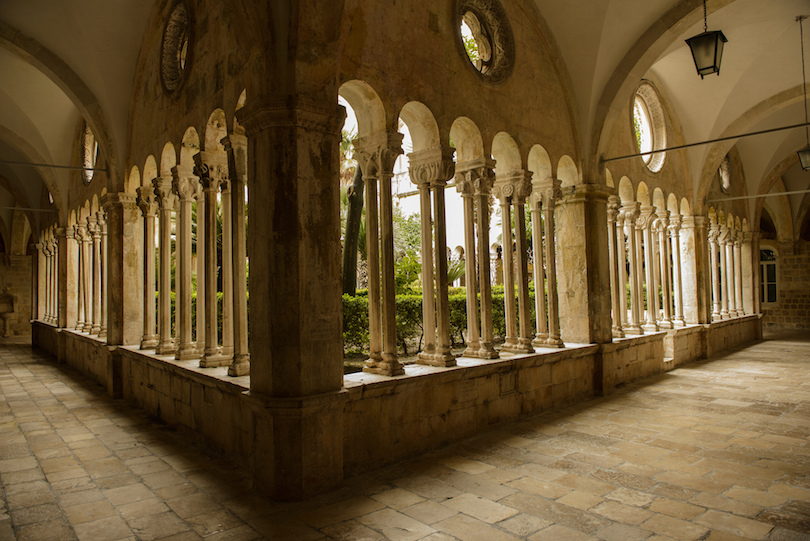
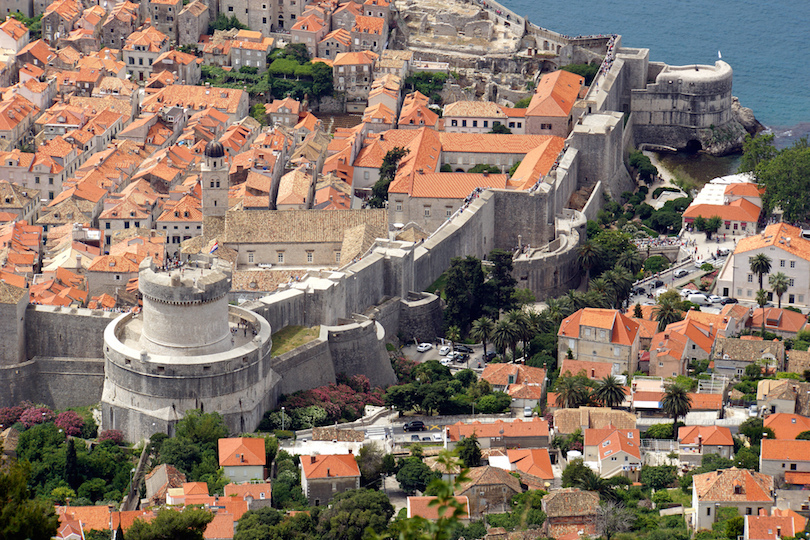
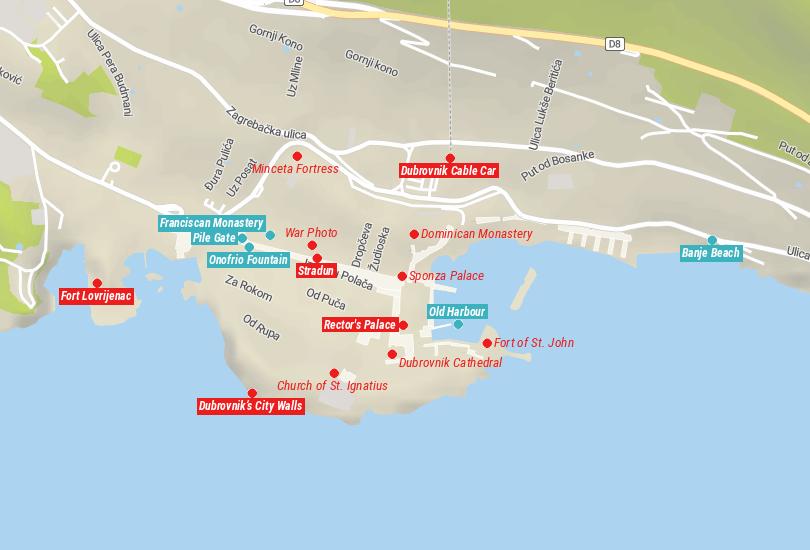
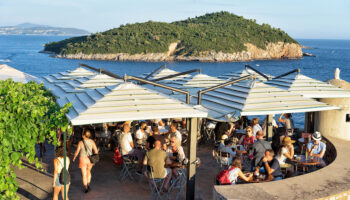
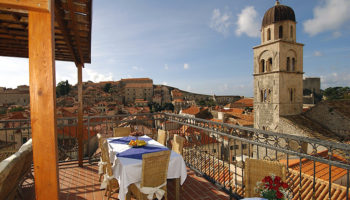
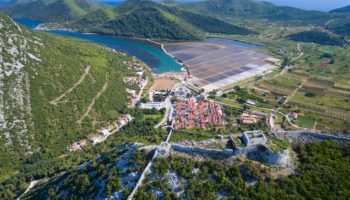
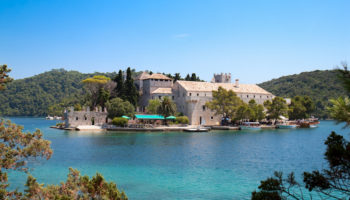
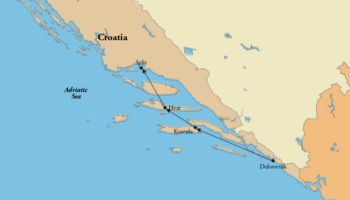
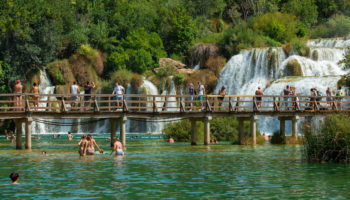
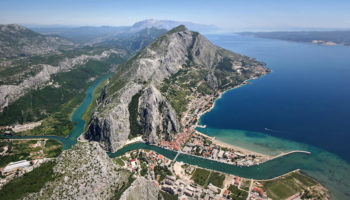
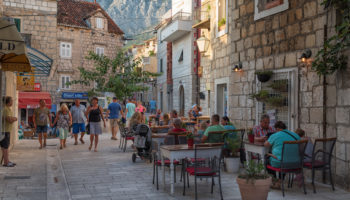
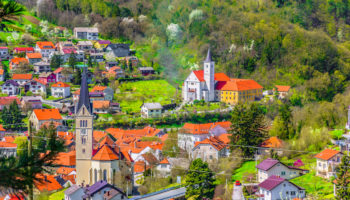
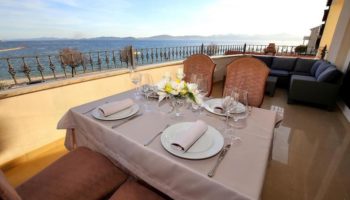
Dubrovnik is my home town, that where I was born, now I live in Bournemouth ( England ) I visit Dubrovnik every year, can never get tired of it, I still believe that Dubrovnik is the best, and most beautiful place in the world,
Dubrovnik I love you, Miho